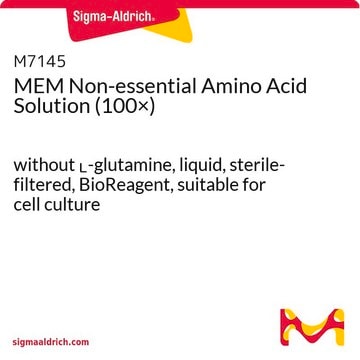As indicated in the 'DESCRIPTION' section of the product page, under 'Cell Line Description', these cells should be handled under laboratory containment level 2.
HeLa Cell Line human
93021013, human cervix, Epithelial
Synonym(s):
HeLa Cells, HeLa-CCL2 Cells, Henrietta Lacks Cells
Select a Size
$402.00
Select a Size
About This Item
$402.00
Recommended Products
Product Name
HeLa Cell Line human, epitheloid cervix carcinoma
biological source
human cervix
growth mode
Adherent
karyotype
aneuploidy
morphology
Epithelial
products
Not specified
receptors
Not specified
technique(s)
cell culture | mammalian: suitable
relevant disease(s)
cancer
shipped in
dry ice
storage temp.
−196°C
Cell Line Origin
Cell Line Description
Application
DNA Profile
CSF1PO: 9,10
D13S317: 12,14
D16S539: 9,10
D5S818: 11,12
D7S820: 8,12
THO1: 7
TPOX: 8,12
vWA: 16,18
Culture Medium
Subculture Routine
Other Notes
related product
Choose from one of the most recent versions:
Certificates of Analysis (COA)
Sorry, we don't have COAs for this product available online at this time.
If you need assistance, please contact Customer Support.
Already Own This Product?
Find documentation for the products that you have recently purchased in the Document Library.
Articles
Learn about the similarities and differences in spheroid formation, roundness, and circularity between Millicell® ultra-low attachment plates and other ULA plates.
Learn how to quantify spheroid formation, roundness, and circularity. Discover Millicell® Ultra-low Attachment plates, an ideal 3D cell culture model for uniform spheroid formation.
DNA, RNA, cDNA derived from ECACC mammalian cell lines allow screening for genes or expression patterns to identify lines most suitable for specific research.
Related Content
Millicell® Ultra-low Attachment plates facilitate 3D cell culture with detailed application information for cell seeding to analysis.
-
Bonjour, y a-t-il un pré-requis de Biosafety Level pour pouvoir commander ces cellules? Merci
1 answer-
Helpful?
-
-
Hey! Regarding 93021013-DNA-5UG: Is this the cell line (frozen culture) or really (isolated?) DNA? Thanks, hannes
1 answer-
93021013-DNA-5UG is DNA extracted from the cell line.
Helpful?
-
-
What passage are my Cell Line cells?
1 answer-
If the passage of the cells is known, it is listed on the product page at the HPA website (www.hpacultures.org.uk).
Helpful?
-
-
Are my Cell Line cells mycoplasma tested?
1 answer-
ECACC routinely tests all manufactured cell banks for mycoplasma.
Helpful?
-
-
How do I handle Cell Line frozen cells upon arrival?
1 answer-
Upon receipt, frozen ampules should be transferred directly to vapor phase liquid nitrogen without delay (-135°C) or liquid phase liquid nitrogen if vapor phase is not available. DO NOT use a -80°C freezer as an alternative; this will result in loss of viability.
Helpful?
-
-
What medium should I use when I thaw the Cell Line cells?
1 answer-
The medium for each cell line is listed on the product page. It is specific to each cell line. If not visible on the Sigma-Aldrich website product page, the HPA website also contains the same information (www.hpacultures.org.uk). The product number for the cell line is the same on either site.
Helpful?
-
-
Why is Vapor Phase Liquid Nitrogen preferred for storage of Cell Line cells?
1 answer-
If ampules are immersed into liquid phase of liquid nitrogen, it increases the risk of the liquid seeping into the vial. This could lead to problems of cross-contamination and increased risk of the ampule exploding when thawed.
Helpful?
-
-
How many Cell Line cells are in the vial?
1 answer-
Each vial of cells contains 2-3 x 106 cells in 1 ml of freezing media. This is in a 1.8 mL ampule. For exceptionally large cells, counts may decrease. Suspension cells, generally smaller cells, may contain as many as 4-5 x 106 cells/vial to assure optimal viability upon thaw.
Helpful?
-
-
Are the Cell Line cells tested for viral pathogens?
1 answer-
HPA Cultures does not perform any viral testing on the cell lines.
Helpful?
-
Active Filters
Our team of scientists has experience in all areas of research including Life Science, Material Science, Chemical Synthesis, Chromatography, Analytical and many others.
Contact Technical Service







